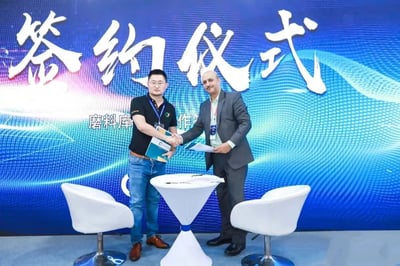Overview of India’s Gear and Bearing Industry and the Application of Grinding Technology in This Sector

Table of Contents
As the “invisible backbone” of manufacturing, the grinding wheel and bearing industries support a wide range of core sectors—from automotive and industrial machinery to wind power and aerospace. In recent years, driven by the rapid expansion of India's manufacturing sector and the "Make in India" initiative, this industry has shown remarkable growth.
It is projected that by 2025, the gear market will reach a scale of USD 2 billion, while the bearing market is expected to exceed USD 4 billion by 2030.
The industry is undergoing a significant transformation: on one hand, the electrification trend is driving surging demand for high-precision reduction gears and low-friction bearings; on the other, industrial sectors such as wind power are increasingly demanding large-size, long-life bearings. To adapt to these changes, enterprises are accelerating technological upgrades by introducing intelligent and automated production processes.
Despite the rapid development, the industry still faces challenges in the supply chain, such as dependence on imported key materials. To address this, domestic companies are actively cooperating with steel manufacturers to develop special steel grades and promote supply chain localization. Meanwhile, gear and bearing products made in India have successfully entered international markets such as Europe, the United States, and Southeast Asia, demonstrating strong competitiveness.
The Critical Role of Grinding Technology in Gear and Bearing Manufacturing in India
Grinding technology is crucial in the production of gears and bearings as it directly affects product accuracy, durability, and performance. As Indian manufacturing shifts toward higher precision and quality, the scope and sophistication of grinding processes are continually improving.
- Precision Grinding in Gear Manufacturing
The meshing accuracy, surface finish, and fatigue life of gears largely depend on grinding techniques. In India, as automotive and industrial equipment place higher demands on gear quality, precision grinding has become a vital production process:
Gear profile grinding: Applied to high-precision gears (e.g., automotive transmissions, wind power gearboxes), it ensures micron-level tolerances, reducing noise and wear.
Hard gear grinding: Used to correct heat treatment deformation in carburized and quenched gears, improving surface hardness and flatness.
Internal gear grinding: Suitable for complex planetary gears and reducer gears, enhancing fitting precision.
- Superfinishing in Bearing Manufacturing
The rotational precision, friction coefficient, and service life of bearings are directly tied to grinding processes. The Indian bearing industry relies on advanced grinding technologies in the following key stages:
Raceway grinding: Ensures the geometric precision of inner and outer rings, affecting load distribution and operational smoothness.
Rolling element grinding: Uses superfinishing technology to achieve a surface roughness below Ra 0.1μm, reducing friction and heat buildup.
End-face grinding: Enhances axial positioning accuracy, especially important in high-speed applications such as machine tool spindles and EV motors.
In recent years, Indian bearing manufacturers have started to adopt automated grinding lines integrated with online inspection systems, enabling real-time parameter adjustments, minimizing human error, and improving yield rates.
- Future Trends in Grinding Technology
Green grinding: Aims to reduce the use of coolants and minimize environmental impact, aligning with sustainability goals.
Intelligent adaptive grinding: Employs AI and sensors to optimize grinding processes, automatically compensating for wheel wear to enhance machining stability.
New abrasive materials (e.g., vitrified bonded CBN): Increase grinding efficiency, extend wheel life, and are suitable for hard-to-machine materials such as high-strength alloy steels.
As India’s gear and bearing industries advance toward high precision and high quality, grinding technology plays an irreplaceable role. With the growing integration of digitalization and automation, grinding processes will become more efficient and accurate, enabling domestic manufacturers to meet increasingly stringent industry standards—particularly in sectors such as electric vehicles, wind power, and high-end equipment manufacturing.



.png?width=400&name=28%20(1).png)